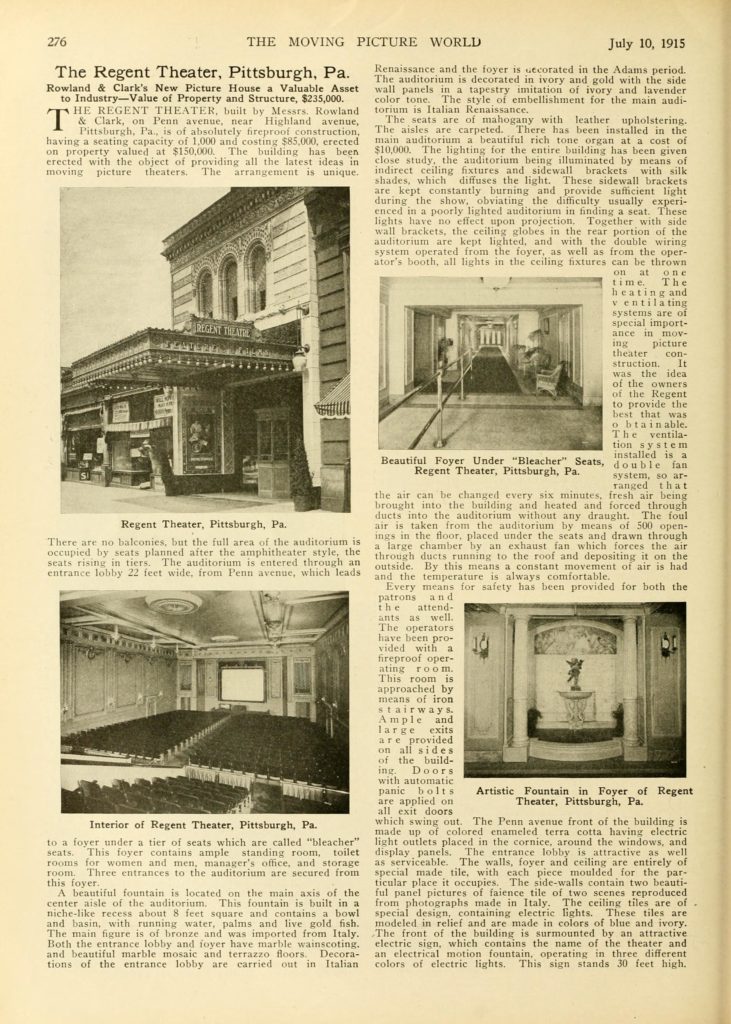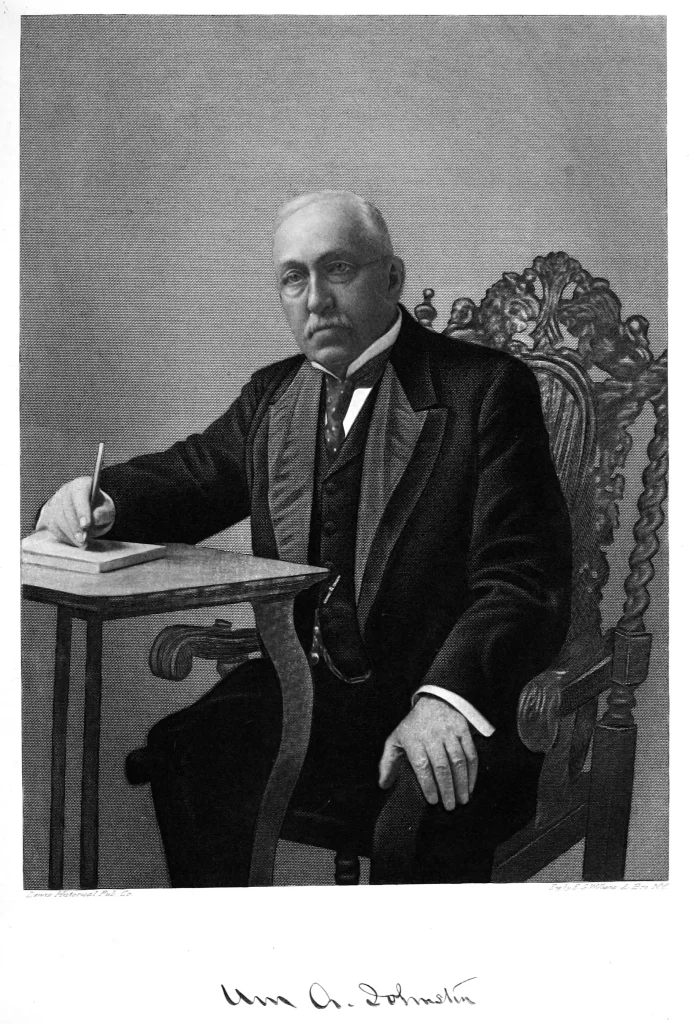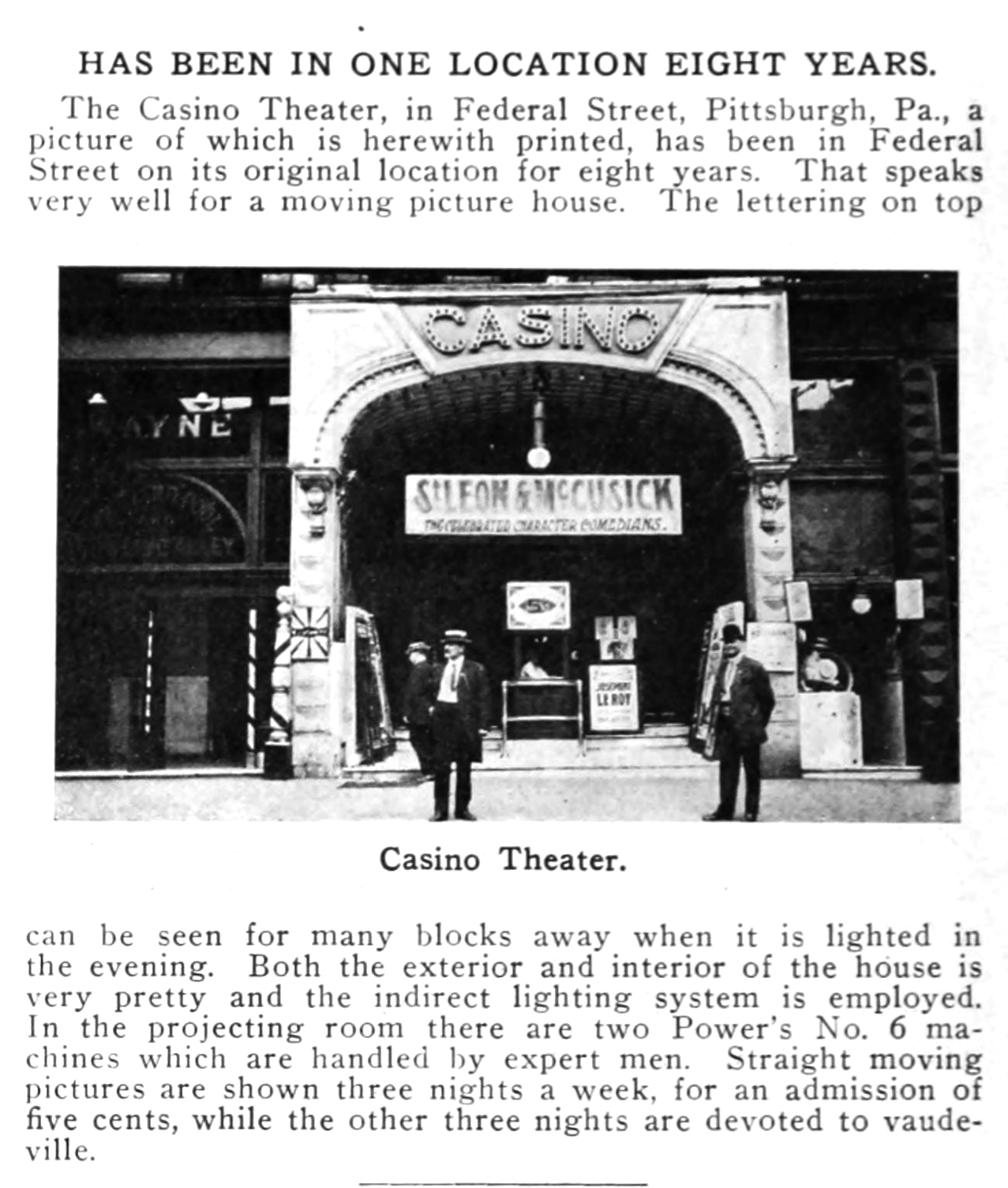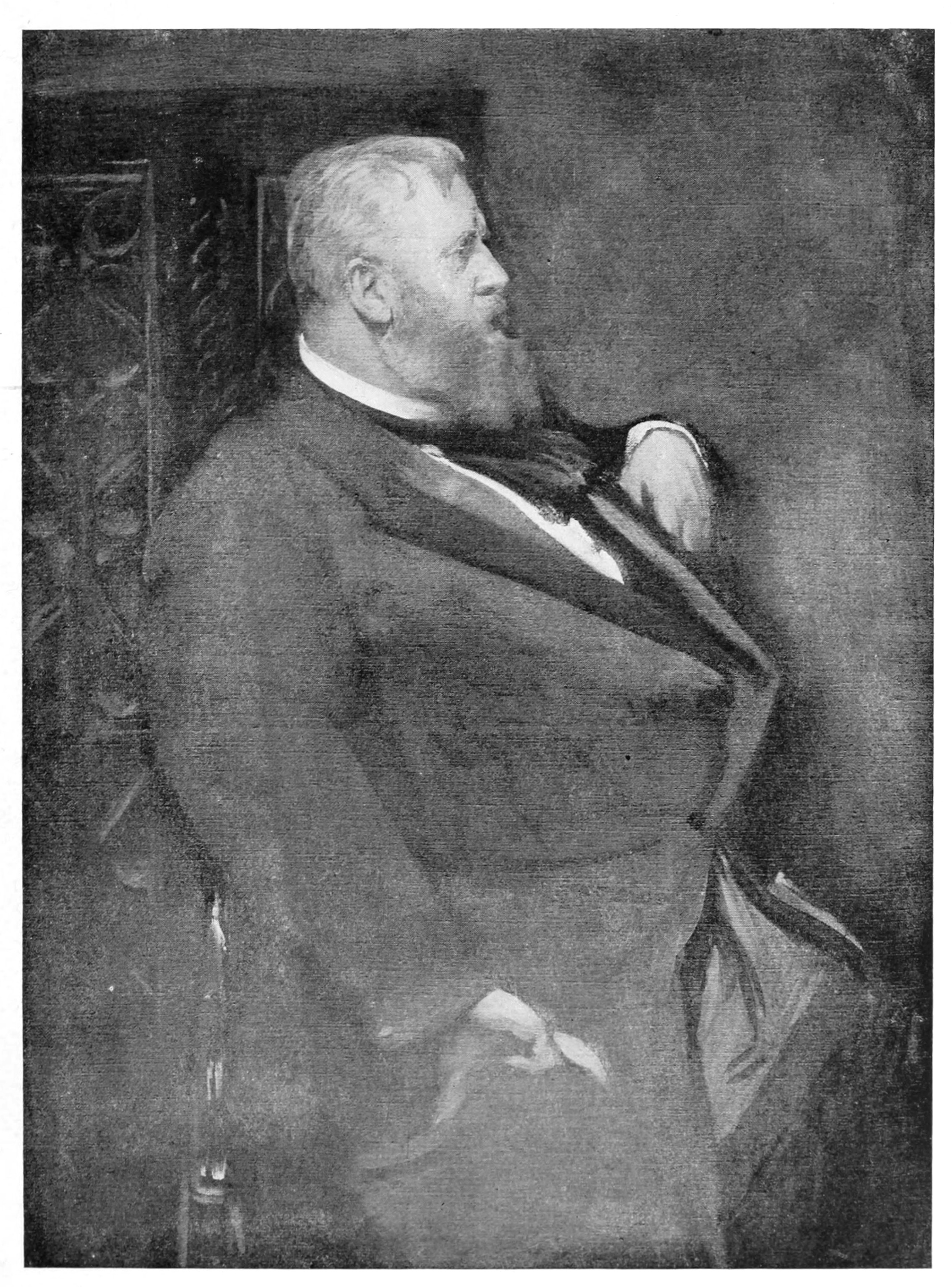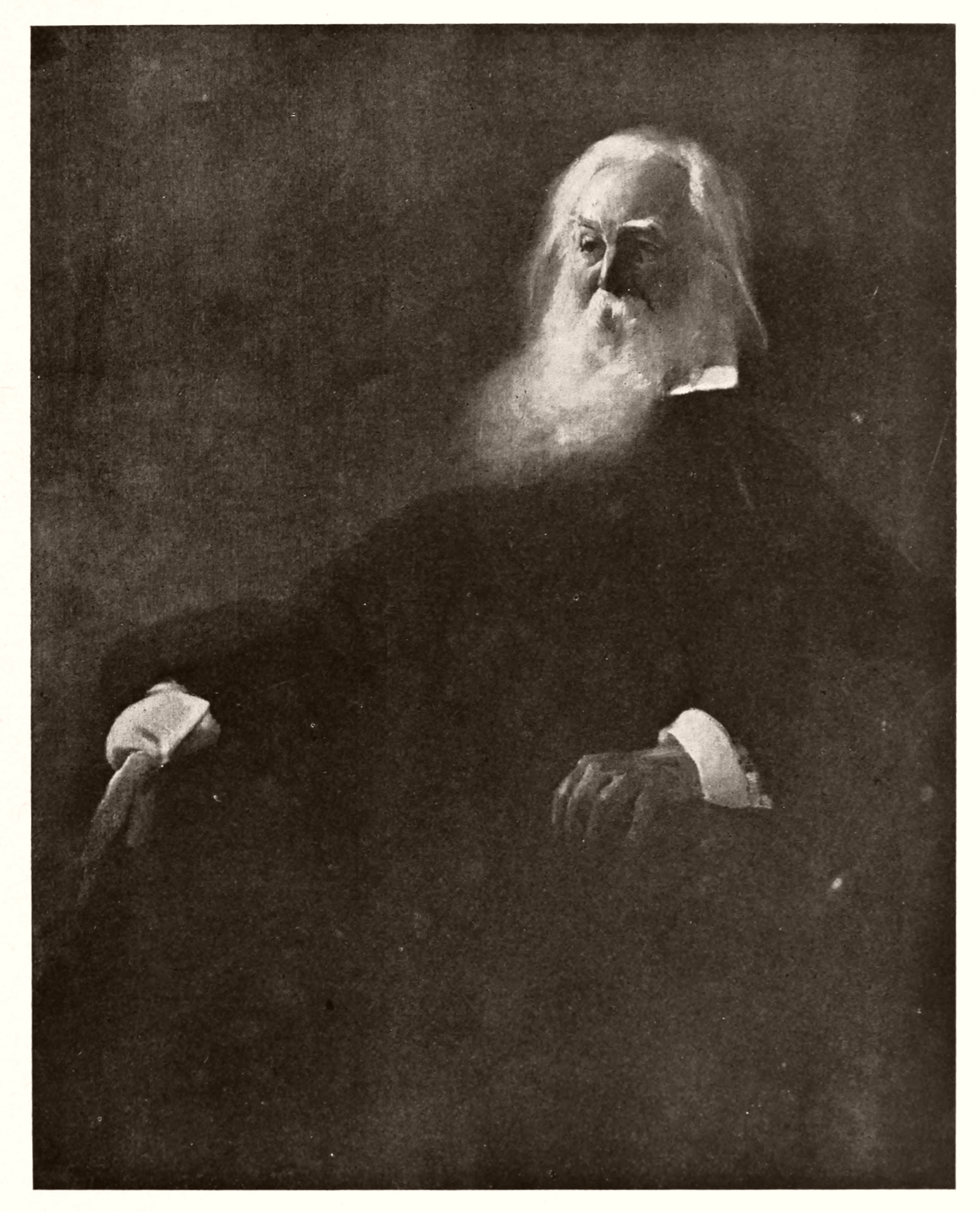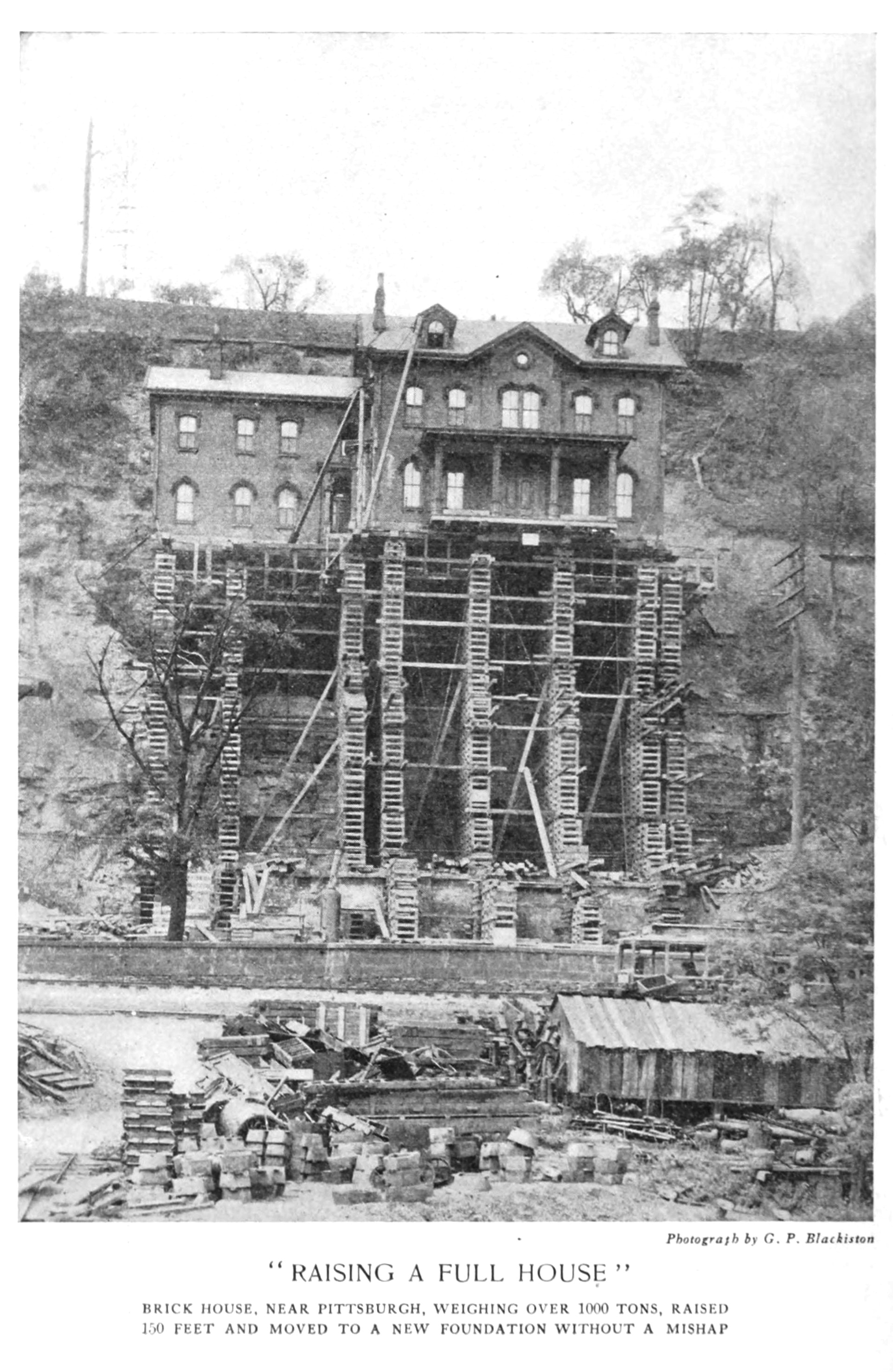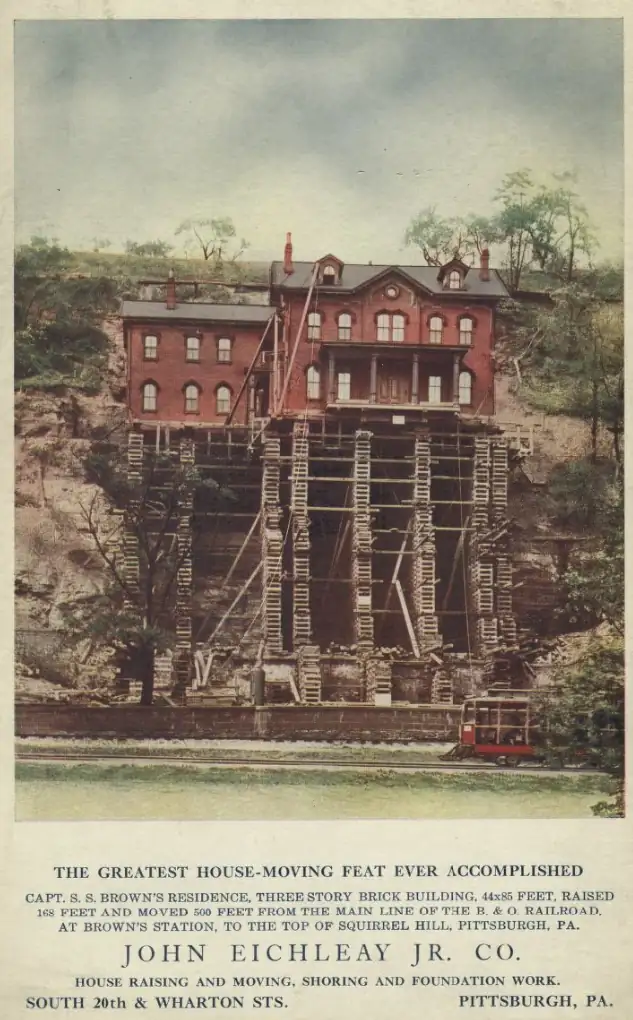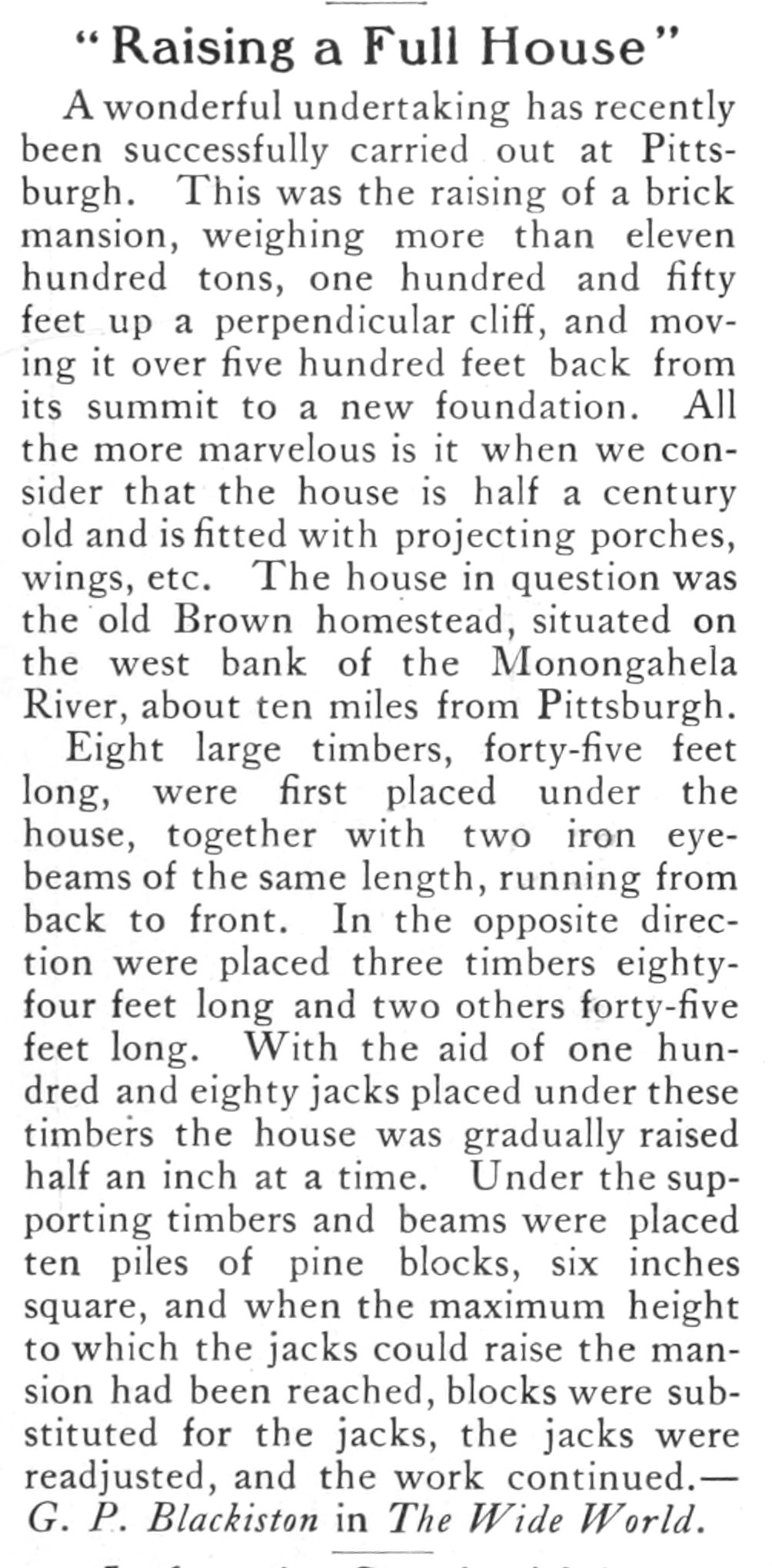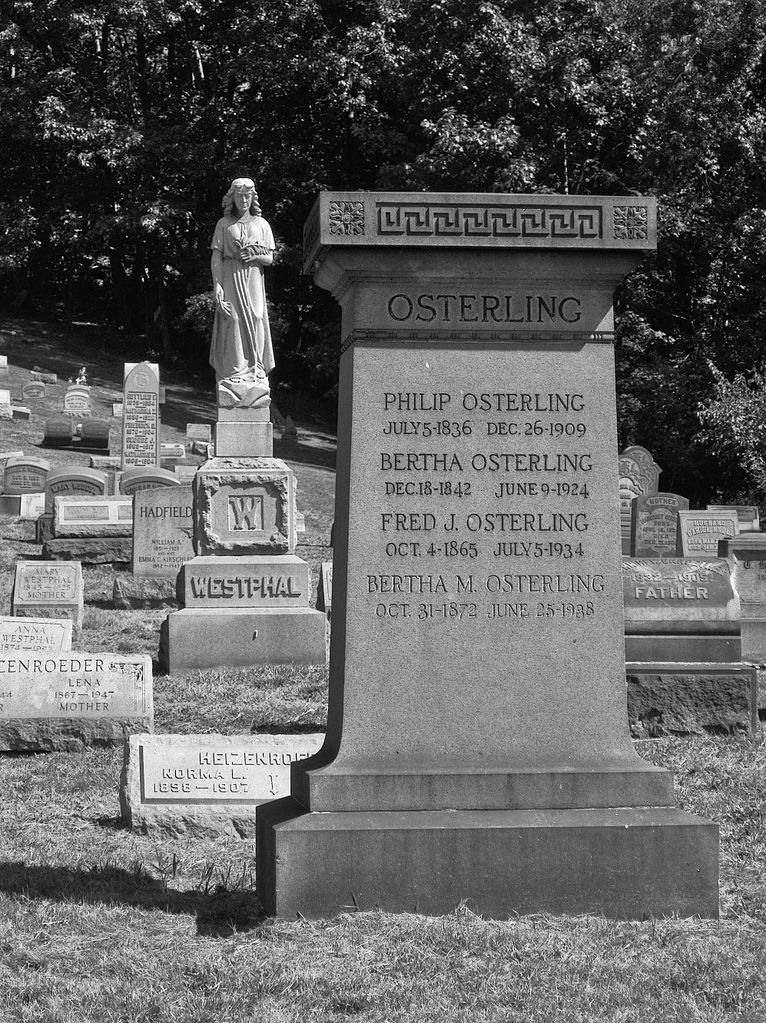
Sometimes one finds things one didn’t know one was looking for. Father Pitt had decided to visit Rosedale Cemetery in Ross Township, a small German cemetery that does not show up on many maps, and here it was: the Osterling family monument, with “Fred J. Osterling” inscribed on it. By the dates we know that this is Frederick Osterling, the great architect, and the monument itself is so strikingly tasteful that one suspects Mr. Osterling designed it himself for his parents.
Frederick Osterling is responsible for some of the most important buildings in Pittsburgh:
The Union Trust Building
The Armstrong Cork Factory
The Westinghouse “Castle”
The Arrott Building
The morgue
The Times Building
—among many others. His career pretty much ended with the Union Trust Building, however; the client, Henry Frick, refused to pay Osterling’s fee when the construction ran late, and Osterling sued. After a decade in various courts, the case of Osterling v. Frick ended in victory for Osterling; but meanwhile it seems that Frick, who was good at holding grudges, had made sure Osterling would never work again. On the other hand, it seems he didn’t really need to work: when he died in 1934, Osterling left an estate valued at a million dollars, which was a good bit of money in those days.
The Bertha Osterling whose name appears below Fred’s name is one of Frederick’s sisters, who apparently never married. Frederick never married, either; but, when he died with a million dollars in his estate, he left $10,000 of it to a certain Martha O. Aber in a handwritten codicil to his will (the rest went to his sisters Bertha and Anna). This woman then claimed to be his secret wife, and demanded a much larger share of the estate. Old Pa Pitt does not know what happened after that.















